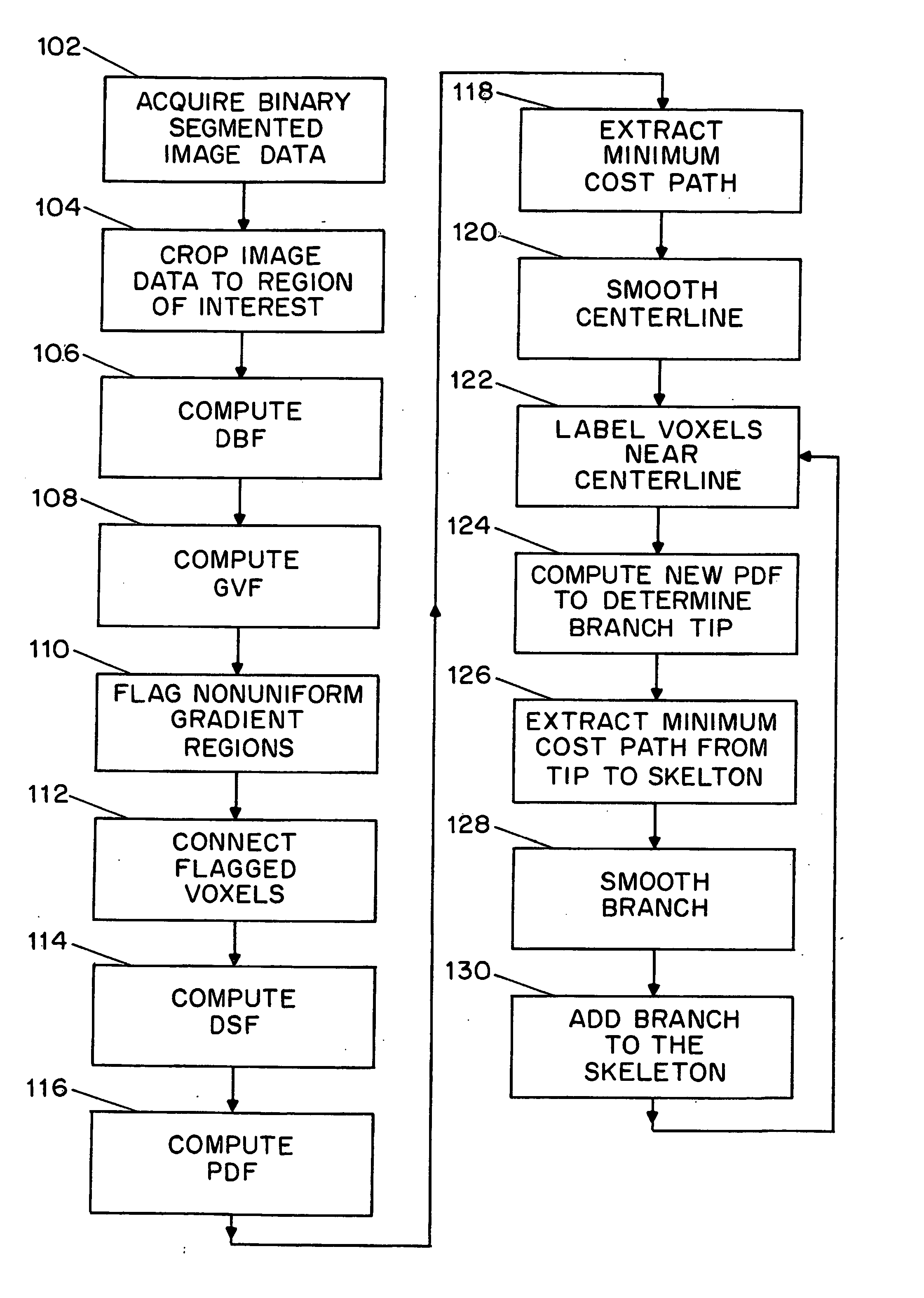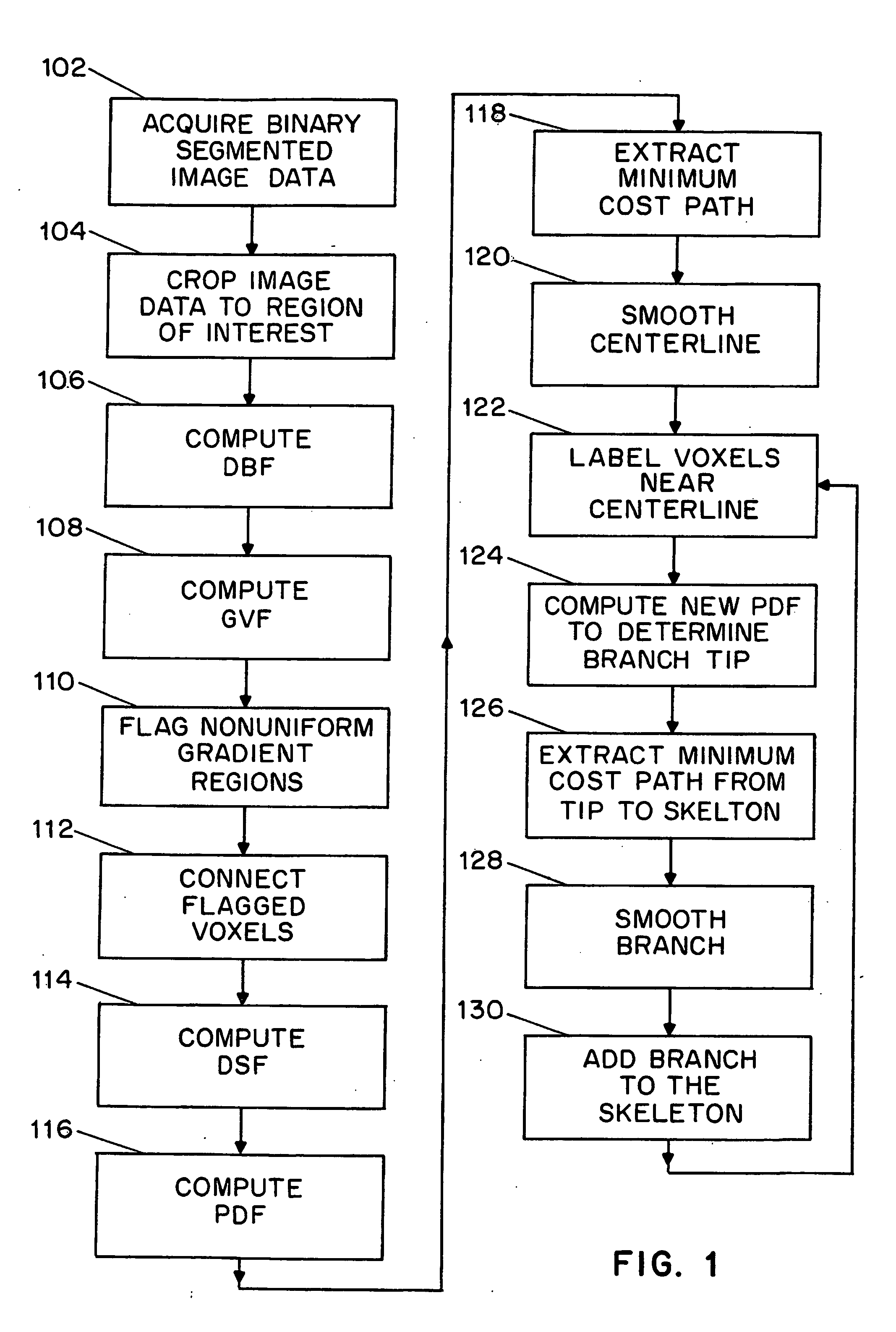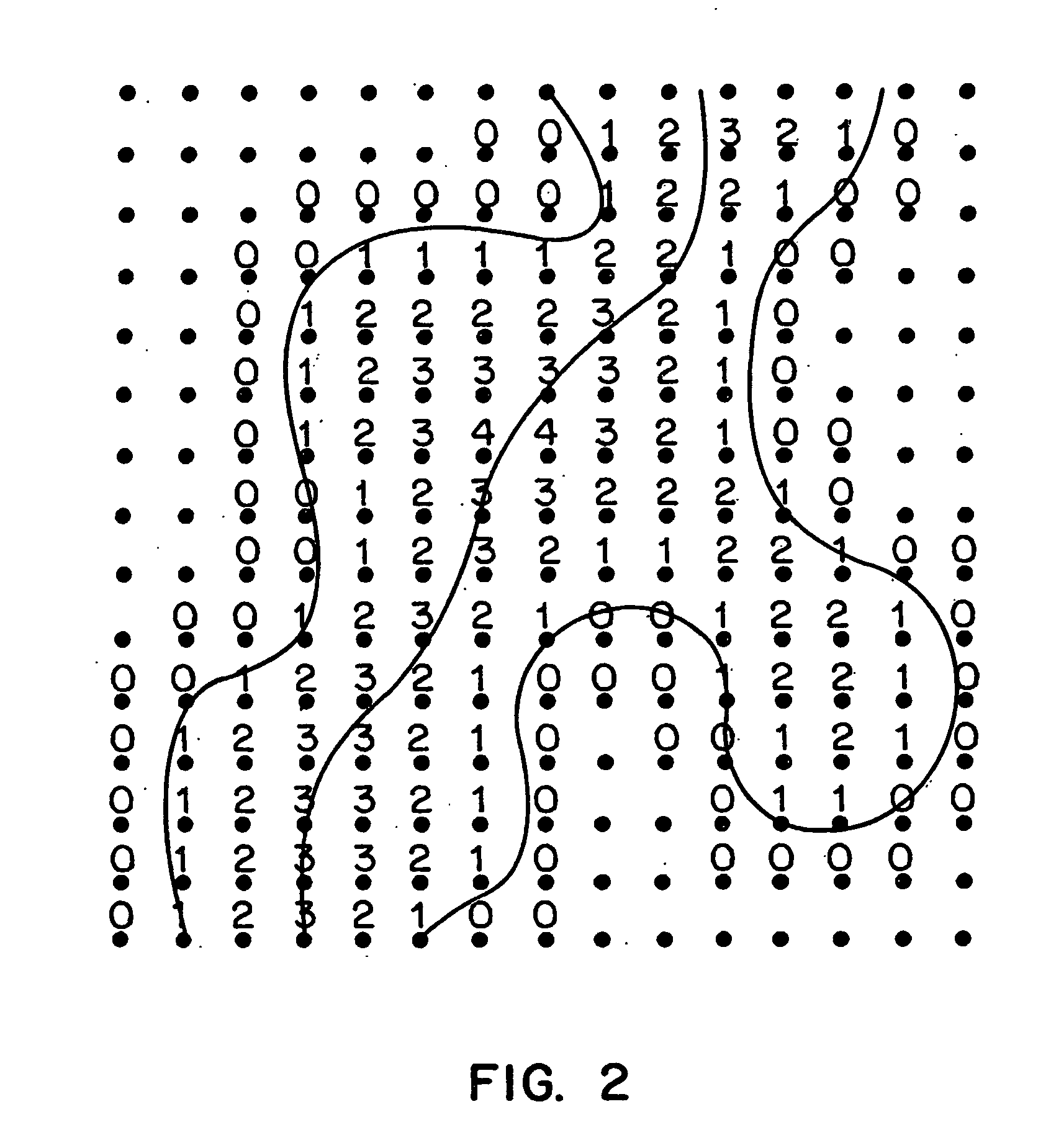Centerline and tree branch skeleton determination for virtual objects
a virtual object and branch branch technology, applied in the field of computer-based three-dimensional visualization, can solve the problems of new challenge, disadvantage of computational cost, and high cos
- Summary
- Abstract
- Description
- Claims
- Application Information
AI Technical Summary
Benefits of technology
Problems solved by technology
Method used
Image
Examples
Embodiment Construction
[0028] The present invention provides an improved and computationally efficient method of automatically generating a centerline in a lumen or a skeleton in a more complex object. The method uses the concept of penalized distance fields to augment known shortest path algorithms, such as the Dijkstra shortest path. The examples referred to are generally in the context of medical examination, such as virtual colonoscopy, but are applicable to any application of computer based virtual navigation.
[0029] As noted above, a problem with the known Dijkstra shortest path algorithm is evident when the path through the object turns sharply. In such a case, without some form of embellishment or modification, the Dijkstra shortest path will tend to hug the corner and deviate from the center of the object. In the present methods, this is corrected by use of the notion of a penalty field. FIG. 8A illustrates a distance field connecting voxels in accordance with the conventional Dijkstra algorithm. ...
PUM
 Login to View More
Login to View More Abstract
Description
Claims
Application Information
 Login to View More
Login to View More - R&D
- Intellectual Property
- Life Sciences
- Materials
- Tech Scout
- Unparalleled Data Quality
- Higher Quality Content
- 60% Fewer Hallucinations
Browse by: Latest US Patents, China's latest patents, Technical Efficacy Thesaurus, Application Domain, Technology Topic, Popular Technical Reports.
© 2025 PatSnap. All rights reserved.Legal|Privacy policy|Modern Slavery Act Transparency Statement|Sitemap|About US| Contact US: help@patsnap.com



